Grand Teton National Park
Wyoming's Mountain Majesty
Article Date: January, 2015
Article and Photography by Mark Quasius
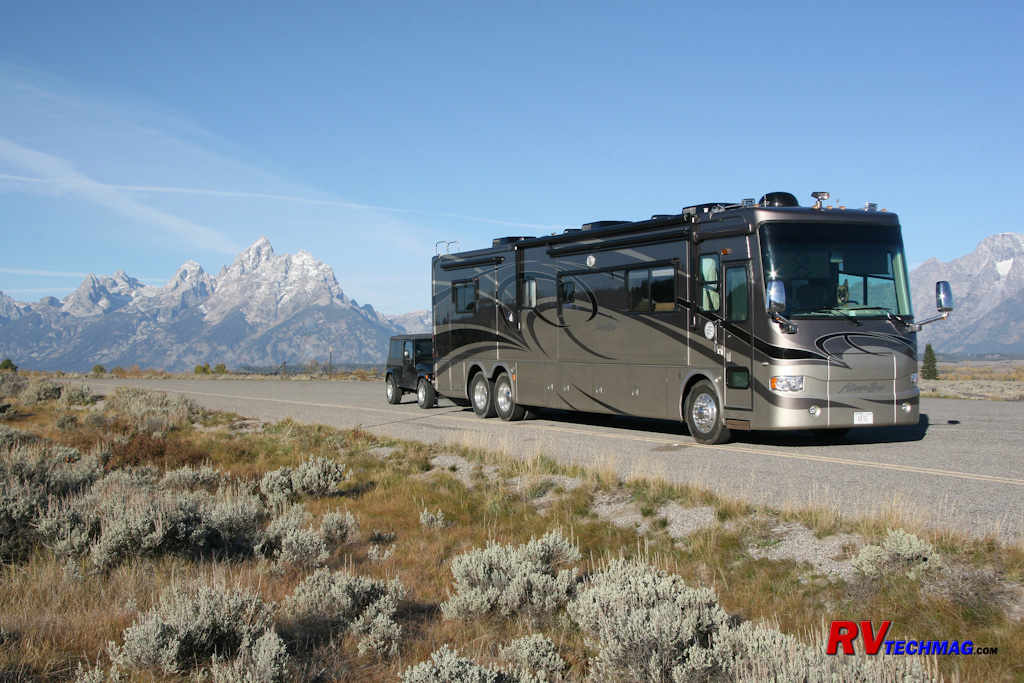
Just to the south of Yellowstone lies a majestic range of mountains rising up from the Snake River plain that showcases yet
another of our national treasures. Grand Teton National Park sometimes is considered a side trip for those who visit Yellowstone, but it truly is a
destination all in itself. It's vastly different from its brother to the north and holds scenic wonders unique to this park alone.
The Grand Teton Range was formed when a series of earthquakes along the Teton Fault caused the western side of the fault to
rise and the eastern side to drop. Eventually, the Teton mountain range rose to heights up to 13,775 feet, while the relatively flat land to the east
dropped down and formed Jackson Hole, a valley approximately 55 miles long by 8 miles wide. This means, the Grand Tetons basically have no foothills
and the unique perspective of this massive mountain range rising up from the valley floor delivers the full effect of standing in front of a wall
of mountains.

Mount Moran rising out of an early morning haze in September
|
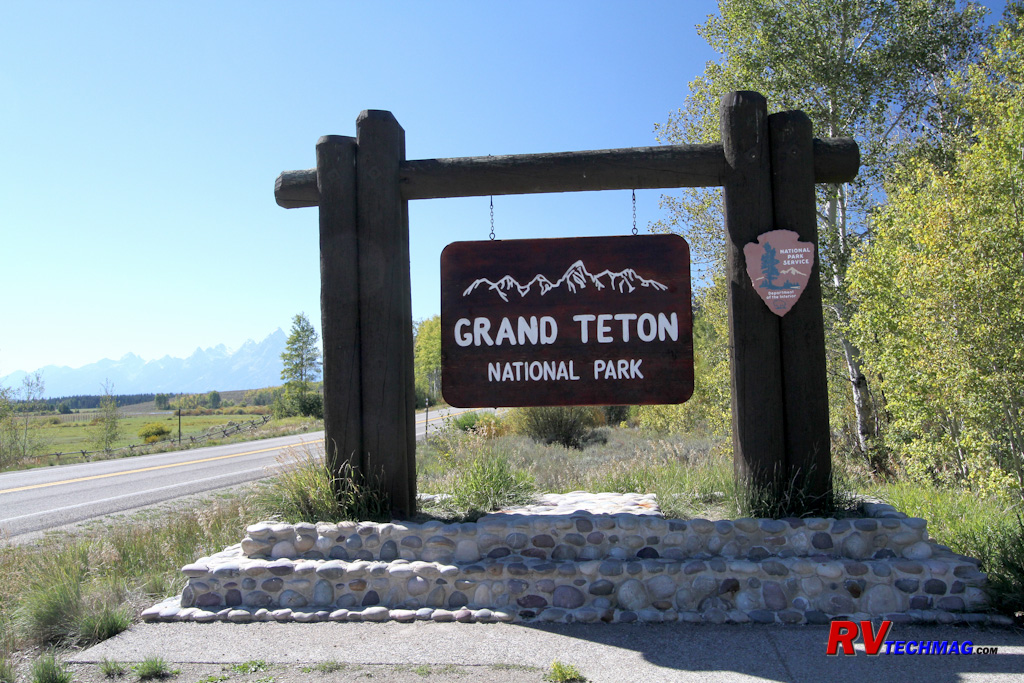
Grand Teton can be accessed from the north, south and east.
|

Bull moose are common in Grand Teton National Park. Their antlers are fully matured by fall
|
The Snake River winds its way through this valley and forms numerous lakes. The river supplies the valley floor with plenty of
water and beaver dams can be found in a number of marshy areas. Aspen trees abound in the valley. In late fall, the aspens turn shades of gold and
bright yellow and the golden hues frame the mountains and fill the valley with brilliant colors that are a photographer's dream.
Pioneers began settling the valley to the east of the range in 1884. Menor's Ferry was built in 1892 to provide wagon access
to the west side of the Snake River, and ranching took off in the early 1900s. A Mormon settlement was established along an area now known as
Mormon Row, and an innovative series of irrigation canals and valves was constructed to provide water for the ranches. A number of barns and old
homesteads remain to this day and are protected as part of Grand Teton National Park.
The park had a bit of a rough startup. Yellowstone National Park was established in 1872, and there was a big push by
conservationists to expand Yellowstone to include the Teton Range. In 1907, the Bureau of Reclamation constructed a dam on the Snake River, which
failed in 1910. It was replaced by a larger dam, and in 1916, the dam was further enlarged to provide irrigation for Idaho with additional plans to
expand it even more.
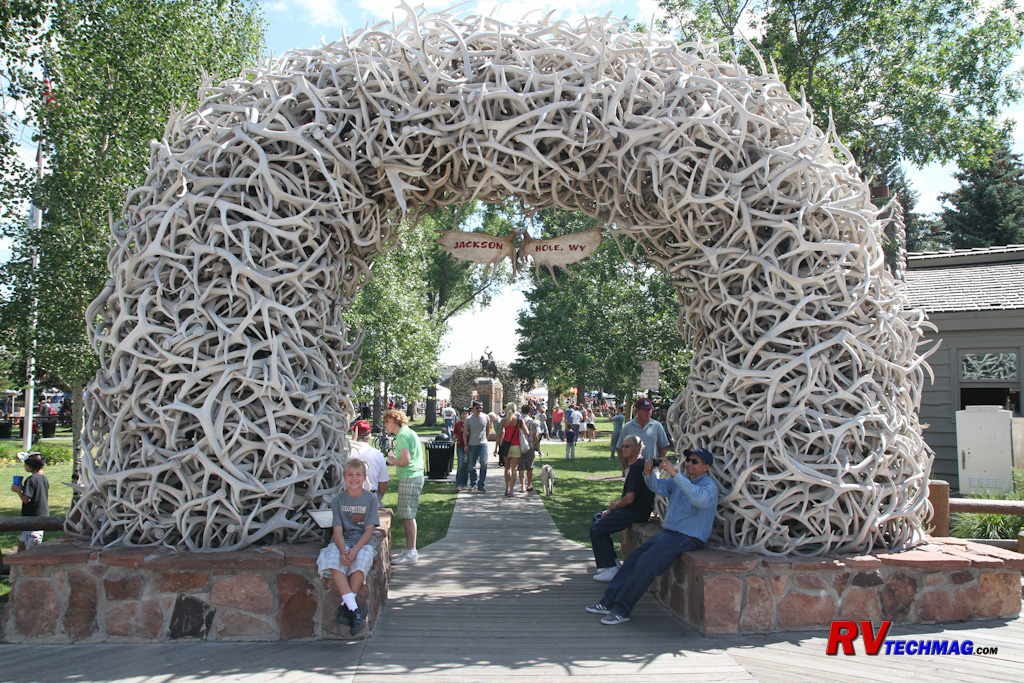
Jackson Hole's famous town square is known for its arches of elk antlers, which are shed every spring and collected from the
National Elk Refuge
|
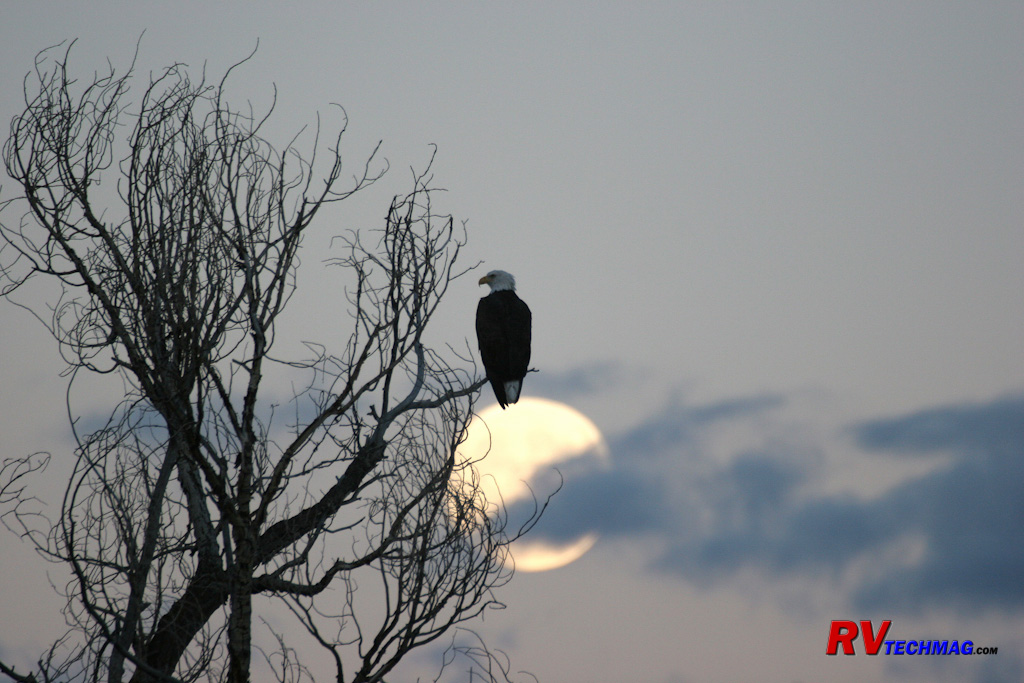
A Bald Eagle surveys his domain in the Gros Ventre area
after sunset
|
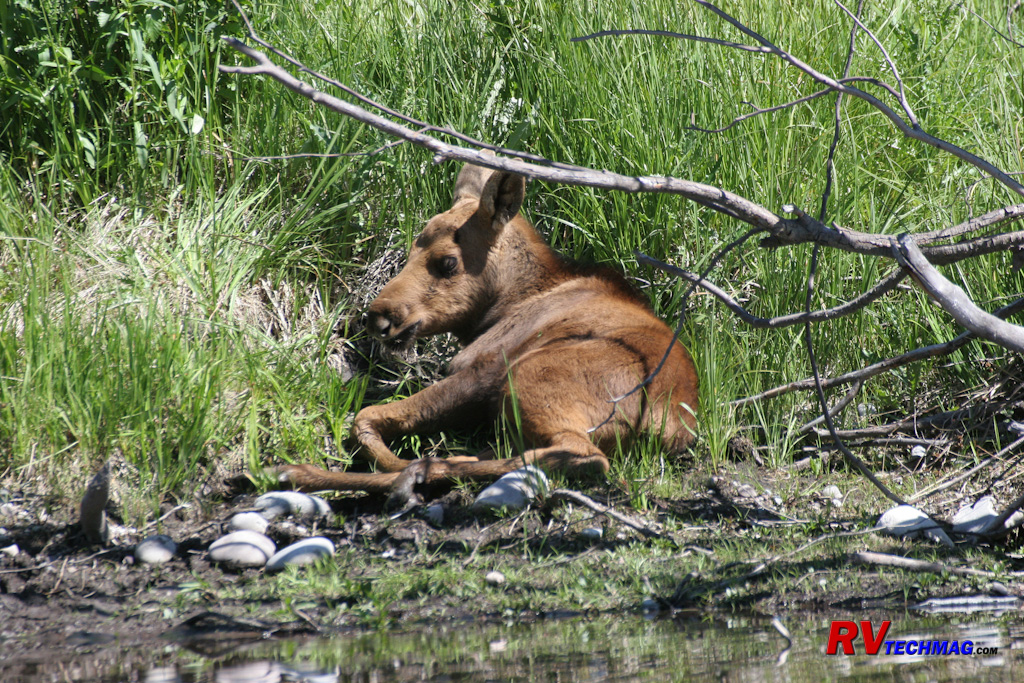
Moose calves spend much of their early days hidden in brush and retain a tan color until they mature
|

While most visitors believe the town of Jackson is Jackson Hole, in fact the long valley depression formed by the meeting of the two
tectonic plates that formed the Teton Range creates Jackson Hole. Views from Signal Mountain offer a good perspective of the valley
|
Efforts by Jackson Hole residents resulted in Grand Teton National Park being established in 1929. But at the onset, it was
a fairly small park that didn't include any of the Jackson Hole Valley. When John D. Rockefeller visited the area in the late 1920s, he decided to
secretly buy up land in the valley under the auspices of the Snake River Land Company to donate to the National Park. This initially met with
political resistance, but by 1943, this land became the Jackson Hole National Monument, which was added to the park in 1950. There are still a
number of private holdings within the park, including the Jackson Hole Regional Airport. Many of these ranches are now used as dude ranches and
mountaineering schools. A number of mountaineering trails are located in the Teton Range, which is one of the most popular climbing areas due
to the steep slopes and lack of foothills.
Navigating the Area
Grand Teton National Park has much to offer and is easily accessed by cars or recreational vehicles from either of three
directions. The northern entrance connects to Yellowstone National Park via the John D. Rockefeller Parkway. This scenic corridor follows the Snake
River and is actually U.S. Highway 89, which passes through the park on its way to the south. Immediately south of the park is the National Elk
Preserve, where a large number of elk migrate to spend each winter. Jackson Hole is just south of the preserve and can be accessed by roads to
the south or from Idaho to the east. The mountains to the west preclude any vehicle access directly into the park, but a third entrance to the
east enters the park at Moran Junction and connects the park to Dubois, Lander, and the Wind River Range to the east.
The park itself consists of the main highway passing north-south through the park, as well as the Teton Park Road, which
loops from Jackson Lake Junction down to Moose. This road passes much closer to the base of the mountains than the main highway and offers more
up-close views of the Tetons than the main highway. The picnic area at String Lake is a popular spot and includes a canoe and kayak launch ramp
for those who want a calm scenic float on String Lake or Leigh Lake. A short one-way loop exits this road at Jenny Lake with stops at Jenny Lake
Lodge and the Jenny Lake parking area. A four-wheel drive road also follows the west bank of the Snake River. This was known as the RKO Road because
a large number of westerns, such as Shane, were filmed here in years past. This road is littered with potholes and can be a real handful if wet,
so it's not recommended for your average vehicle.
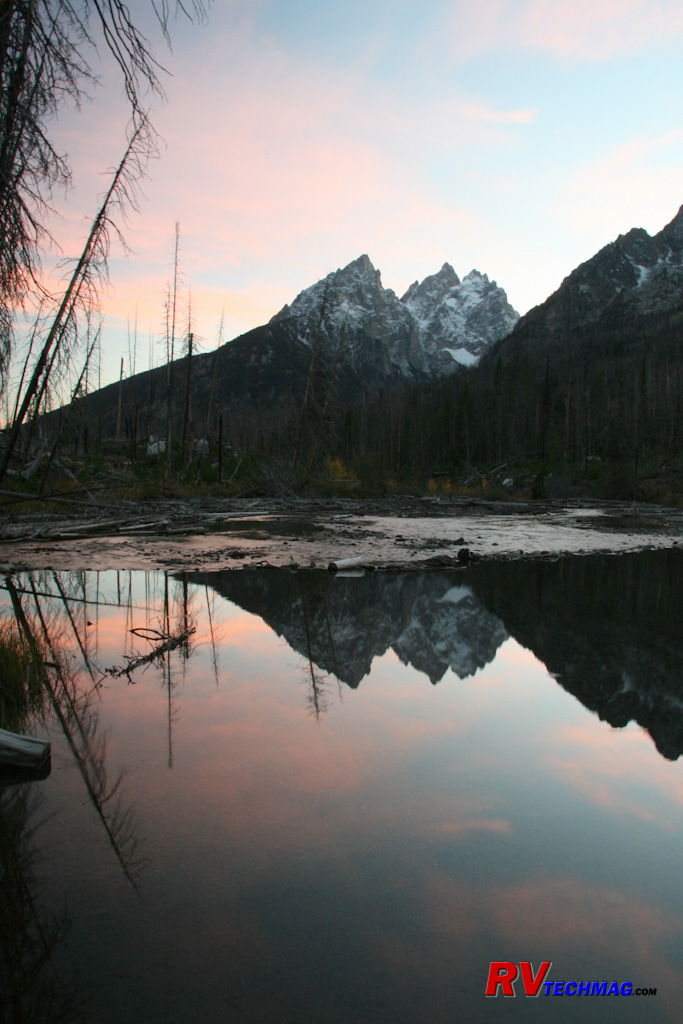
Alpenglow just after sunset rises over the mountain peaks beyond String Lake
Near the southern end of the park lies Moose, where Teton Park Road and U.S. Hwy. 89 meet. A bridge over the Snake River may
afford views of moose browsing along the riverbanks and the Moose-Wilson road passes by marshes that may also contain moose. A side road goes to
Dornan's, a concessionaire that offers barbecues, a general store, and outfitting store, and gasoline pumps. Farther to the south, the Gros Ventre
(pronounced Grow Vont) Road parallels the Gros Ventre River towards a campground at Lower Slide Lake, which is another popular area for moose, bison,
and bald eagles.

The picnic area at String Lake is a popular spot for launching canoes and kayaks
Along the main highway, and slightly to the north, a side road goes through Antelope Flats, where you can often spot Pronghorn
Antelope. Antelope Flats Road intersects with Mormon Row after a brief drive along which you can view the Mormon Settlements and barns against a
backdrop of the distant Tetons -- always a photographer's favorite. As you proceed north along the main highway, you'll pass Schwabacher Landing,
whose ponds reflect the image of Mount Moran. Here you'll find hiking trails to beaver dams, and moose are known to frequent the area. A number of
other interesting stops and pullouts are located along the main road, but perhaps one of the most popular is Oxbow Bend.
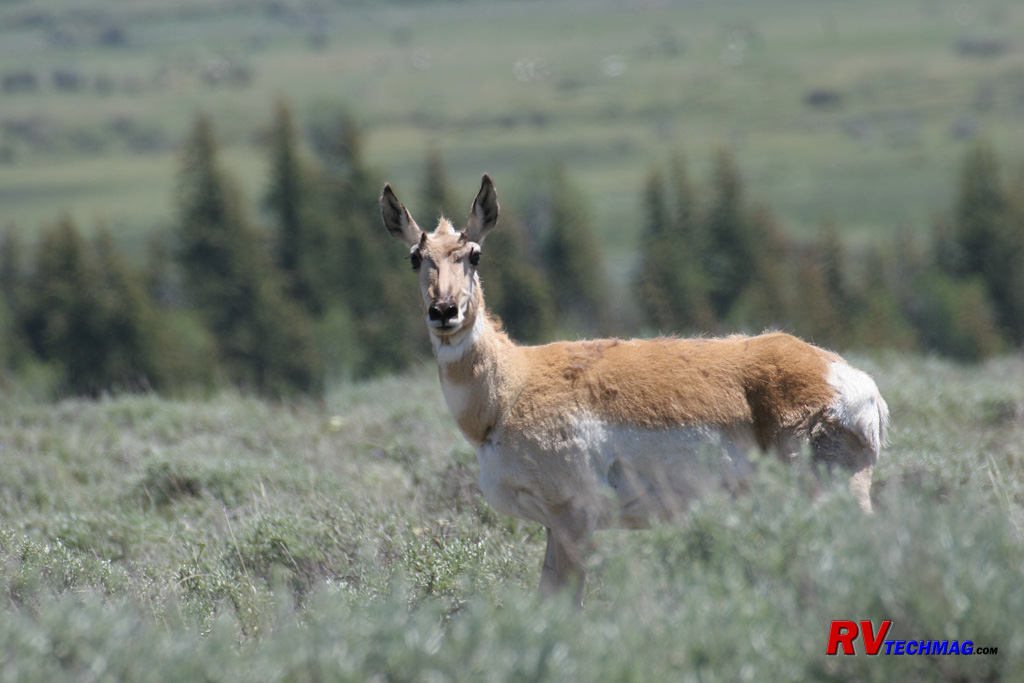
Pronghorn antelope live in the flat grazing areas of the park. They are actually members of the goat family. They are the second fastest land
animal, second only to the cheetah and can run at bursts up to 55 mph or sustained speeds of 35 mph
Oxbow Bend is just north of Moran Junction. The road wraps tightly around a large bend of the Snake River. On the far shore,
willows provide excellent moose habitat and the river winds along the Grand Teton. On a day with no wind, the placid waters of the Snake provide a
mirror image reflection of the stately mountain in its waters. During the fall, the aspens lining its banks turn to shades of gold and combine with
the blue waters for an artistic setting. A walk from the ample parking area along the river's banks will reveal a number of photographers and
painters attempting to capture this Kodak moment.
The town of Jackson Hole is located immediately south of the park and is a destination in itself. Known for its ski resorts
during the winter, it offers plenty to see and do during the summer, too. The town square usually has rotating events each summer. The highlight of
the square is the entrance arches at each corner made of elk antlers shed during the spring. The surrounding downtown area is filled with shops,
featuring everything from T-shirts to mounted wildlife. A large selection of tour operators and guides offer everything from guided tours to river
rafting to mountain climbing treks. Dining ranges from walk-in places like Moo's Ice Cream Shop to the Gun Barrel, a fine restaurant in a former
wildlife museum with menu selections that include bison, beef, and game. The Million Dollar Cowboy Bar and the Silver Dollar Bar are local legends
and long-time favorites.
|

Clark's Nutcrackers like to frequent the pines in Grand Teton National Park
|
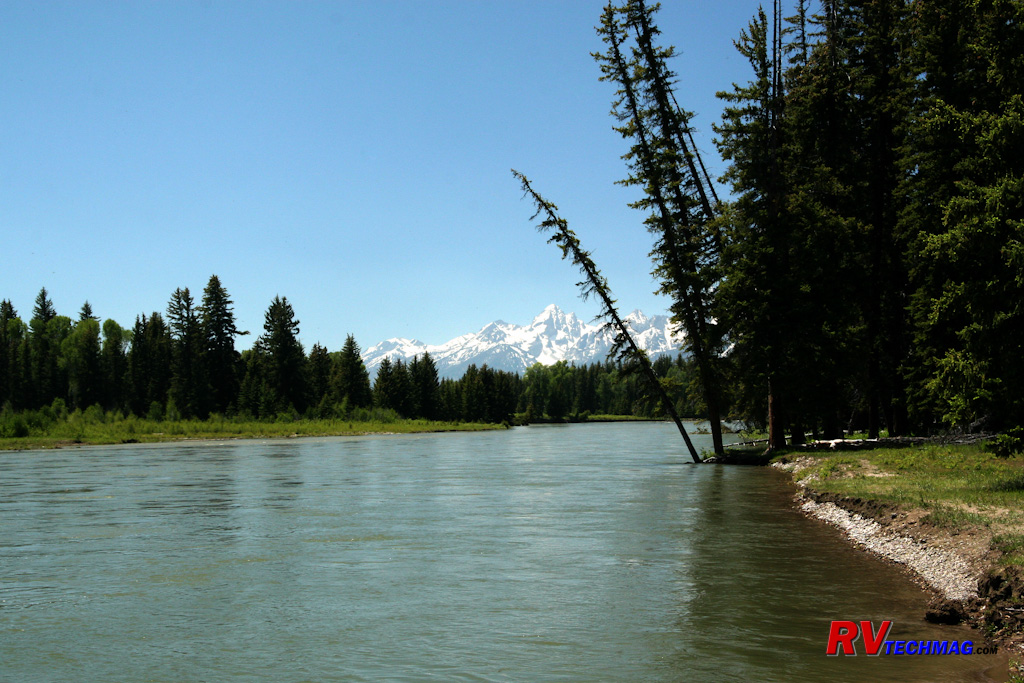
The Snake River winds through the valley and can be accessed from Schwabacher Landing or via the RKO Road on the river's west bank
|
On the northern edge of Jackson Hole, sandwiched between the town and Grand Teton National Park, is the National Elk Refuge.
During the winter, elk travel south from Yellowstone's southern high country to the low, grassy plains north of the town. The number of elk has
exceeded the amount of grass available for them in the refuge, but hay is delivered during the winter by tractors. Visitors can hop aboard a sleigh
ride that travels amongst the elk, always a memorable experience.
There are lots of lodging options available. For those RV travelers who would like to park their RV and stay in a lodge,
accommodations at Signal Mountain Lodge, Jackson Lake Lodge, or Colter Bay Cabins place you right in the middle of the park. The town of Jackson Hole
has numerous motels and bed-and-breakfast facilities. Camping is available in Jackson Hole at the Virginian RV Park or at Grand Teton RV Park,
located just outside the east end of the park at Moran Junction. Flagg Ranch, north on John D. Rockefeller Parkway, offers cabins as well as a
campground. You can camp inside the park. Colter Bay Village has a tent campground and a full-service RV park nestled into the tall pines next to
Colter Bay. The Gros Ventre campground, on the east end of the park alongside the Gros Ventre River, is roomy but has no hookups. Primitive camping
is also available at Jenny Lake, Lizard Creek, and Signal Mountain.
Winter at the Park
For RV owners who are more adventurous, primitive winter camping is allowed on the snow-covered parking area at the Colter Bay
Visitor Center. Although Teton Park Road and other minor roads are closed during the winter, the main highway that travels through the park and
Togwotee Pass to the east are normally open during the winter. Togwotee is a fairly gradual climb and decent, so RV travelers on U.S. 26/287 to the
east will have no difficulty on that route. Heading south from Jackson Hole is also an easy drive, but to the west, Teton Pass climbs the mountains
and is a steep and twisty pass. Most RV owners will be much more comfortable heading south a bit to Alpine and then crossing over to Idaho on
U.S. 26.
Grand Teton is a four-season park. Winter has its challenges for RV travel but it can be rewarded with visits to the elk
refuge and ski slopes for those who are equipped for that. Summer is the busy season when many families flock to the park, and spring is less busy.
Autumn offers stunning views of the fall colors and is the time of the elk rut. Elk bugles echo throughout the valley as bull elk round up their
harems. Both elk and moose are resplendent with fully matured antlers. There's never a bad time to visit this area. Once you've seen the beauty of
the Tetons, you will want to return.
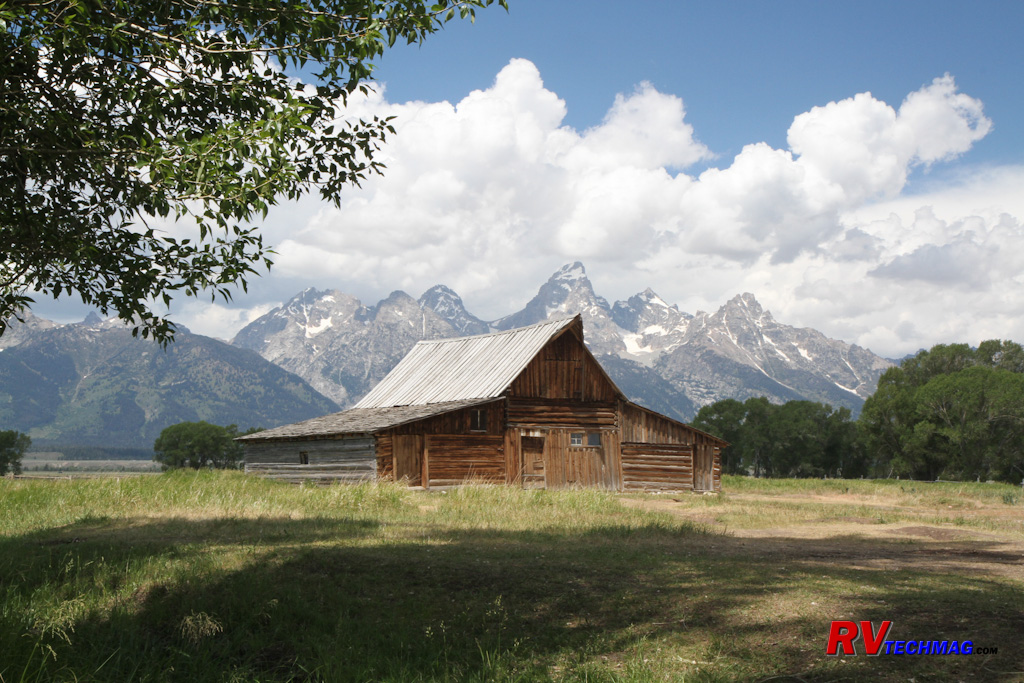
The Moulton Barn is one of a series of barns built on Mormon Row, created by Mormon settlers during their early settlement in Grand Teton
National Park
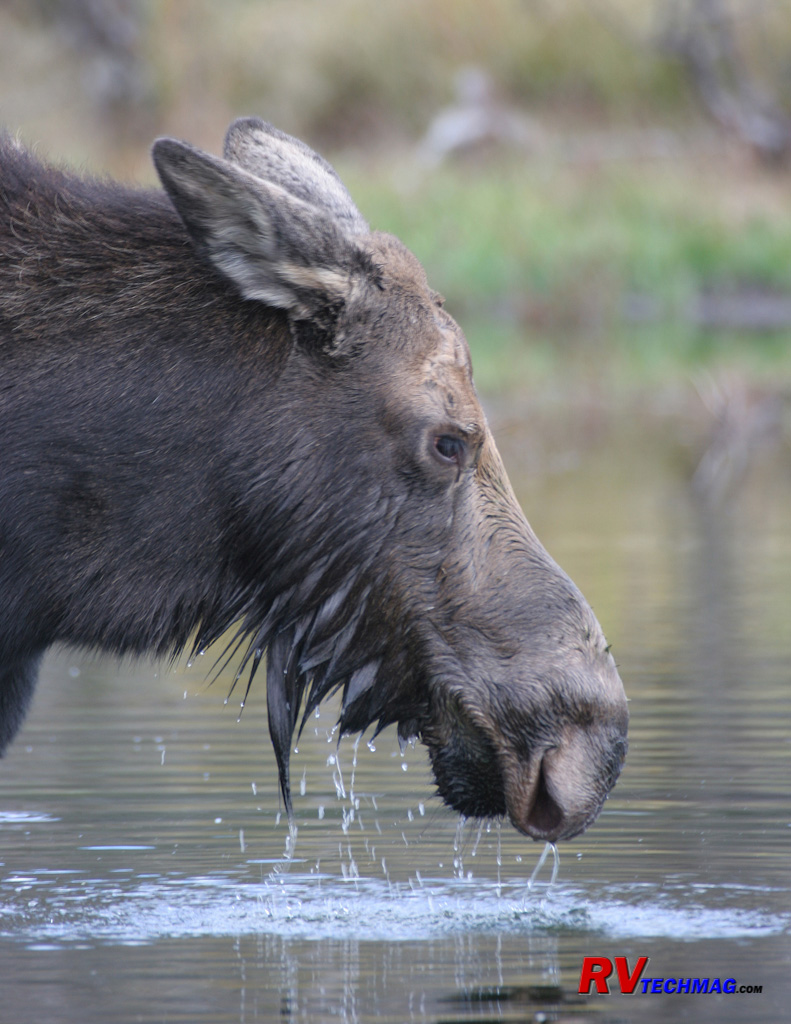
Cow moose, which don't develop antlers, can be seen in the various marshy
areas of the park browsing for sedges
beneath the water
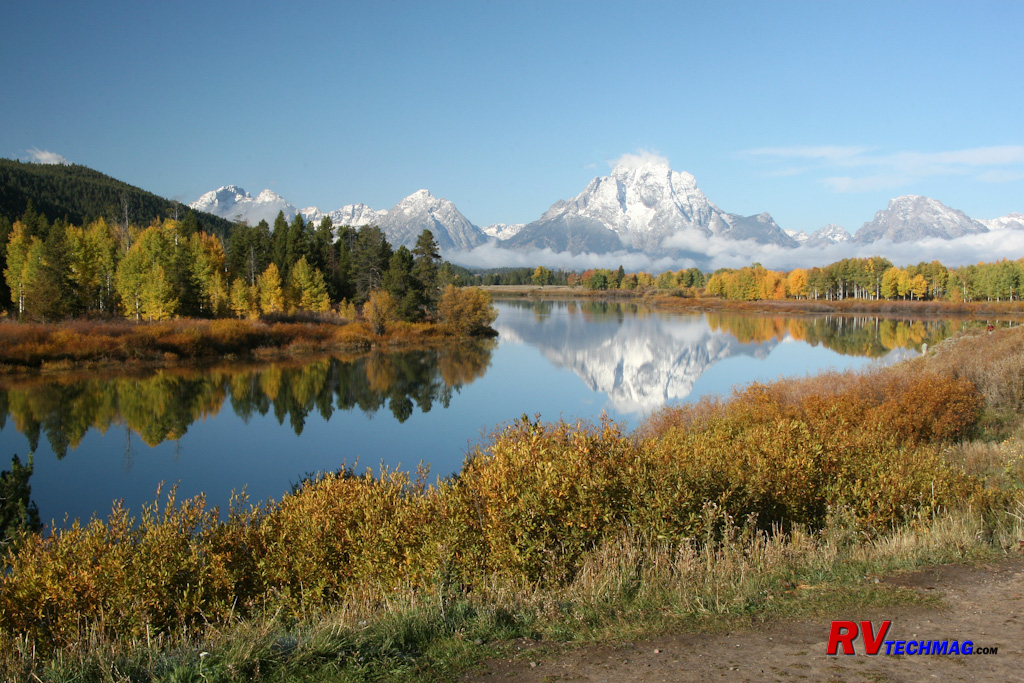
Oxbow Bend is formed where the Snake River bends in a horseshoe and highlights Mount Moran in the distance. The spot is very popular in the
early morning when moose and other wildlife can be seen
Source
Return to Home Page
If you enjoyed this article be sure to recommend RVtechMag.com to your friends, like us on Facebook or Twitter
or subscribe to our RSS feed.



|




















